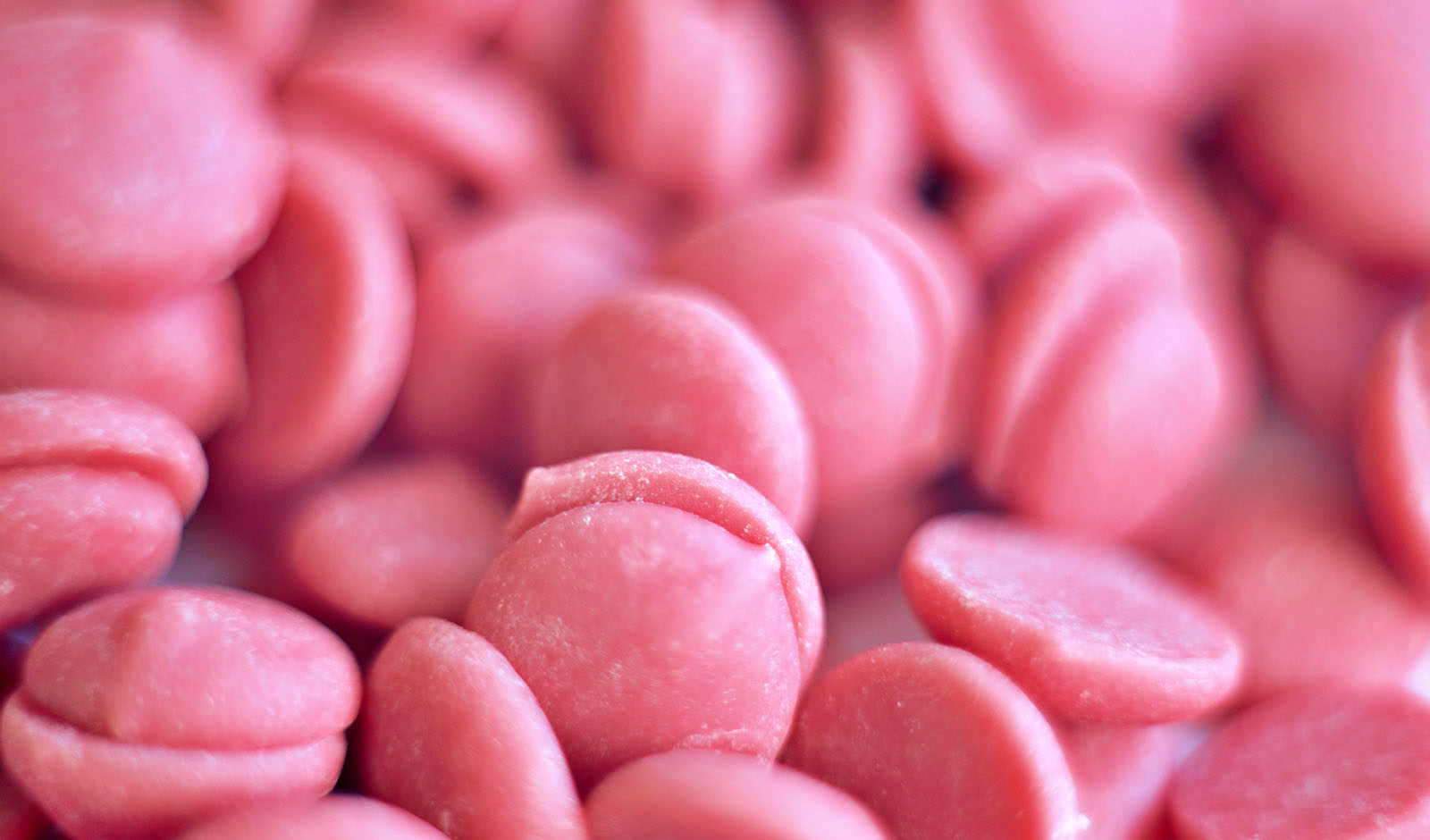

Pink, unique, and extremely photogenic, ruby chocolate is all the rage in the culinary world. Bakers and chocolate-eaters alike can’t wait to get their hands on this new and exciting product. Why is it so special? Is it as good as it looks? Experts from Santa Barbara Chocolate are here to share their secrets with you.
History of Ruby Chocolate
Ruby chocolate debuted at the Shanghai trade show in September 2017, and it’s been a hot topic ever since. The first publicly available version appeared in Japan, moved on to Europe in 2018, arrived in the US in 2019, and to this day gets increasing amounts of popularity. It’s sometimes called “the fourth chocolate,” next to dark, milk, and white chocolates. Following about a decade of development, it made the first appearance in the market roughly 80 years after white chocolate was introduced. Ruby chocolate is often regarded as the “millennial chocolate”, as it appears to target a younger, Instagram-obsessed generation.
The “fourth chocolate”
Ruby chocolate has come a long way to be officially regarded as chocolate, at least from the FDA’s point of view. Food categories are determined based on the ingredients, basically: what’s in there, how many, and how can you translate it to percentages. While ruby chocolate has all the right ingredients that appear in regular chocolate, it doesn’t meet the “right” percentages. Right away, you can see it’s pink, so from a visual point of view, it’s definitely not dark chocolate. It doesn’t have enough unsweetened chocolate to be milk chocolate and has too much unsweetened chocolate to be classified as white chocolate. Ruby chocolate proved it needs a fourth definition to become a member of the popular chocolate category. Truth be told, people are going to love it, whether it meets official standards or not. After all, anyone with a sweet tooth doesn’t need much convincing.
Why pink?
The pale pink hue immediately catches the eye and makes the mouth water. According to Barry Callebaut, Swiss cocoa giant and the inventing company behind ruby chocolate, it has no flavor or color added. The company claims that the source of the characteristic color is ruby cocoa beans. These beans are not genetically modified, nor are they a recently discovered type of cacao. Other ingredients the company has revealed to the public eye include sugar, cocoa butter, citric acid, milk powder, and emulsifiers. However, we may never know exactly how the company gets this unique color, as it cites trade secrets. Fair enough!
Taste test
Ruby chocolate looks absolutely stunning and steals the spotlight on every picture. What about the taste, though? You’ll love ruby chocolate if you’re a fan of a berry-chocolate mix. People describe the taste as quite sweet, similar to raspberry-flavored white and milk chocolate mix. It’s fresh, smooth, and fruity. Sour, tart, tangy, and yogurt are among other flavor notes. Sounds heavenly, doesn’t it?
Fake? Natural? Vegan?
Since the launch of ruby chocolate, there have been questions. Is it fake? Can you make it at home? What are the exact ingredients and proportions? Some questions are easy to answer; some are still a mystery. For sure, you won’t get real ruby chocolate if you add food coloring to white chocolate. Theoretically, ruby chocolate is made as naturally as any other chocolate. However, different uses require various ratios of its ingredients. For all vegans out there, the main 3 ingredients of ruby chocolate are cocoa butter, sugar, and milk powder, making it vegetarian, but definitely not vegan. What’s more, it’s not labeled as organic.
Ruby chocolate products
Ruby chocolate debuted in Japan as a KitKat Ruby candy bar. Japanese KitKats are well known for their unique flavors, loved by the locals and tourists alike. The Asian food market is famous for its original products and flavors, and launching a new, exciting product for the Japanese was a huge success. Since then, ruby chocolate products have started to enter the markets of other countries. KitKat Ruby is available in Japan, South Korea, and the United Kingdom, and it may be available for shoppers in the United States as well.
However, KitKat bars are not the only products that feature this highly coveted product. Sadly, there’s no way to make ruby chocolate at home. So far, it’s been released to professional chocolatiers, who found other creative uses for ruby chocolate. There are truffles, bonbons, chocolate bars with roasted almonds and candied violet petals, and of course, plain pink chocolate bars. You can buy these goods in chocolate shops all around the world.
Conclusions
Barry Callebaut once again proved that they excel in a creative approach to chocolate making. As beautiful, trendy foods keep growing in popularity, you may expect to see more ruby chocolate products – not only on the internet but maybe, one day, at your local store. Is it worth all the hype it gets? That’s for you to decide.
























